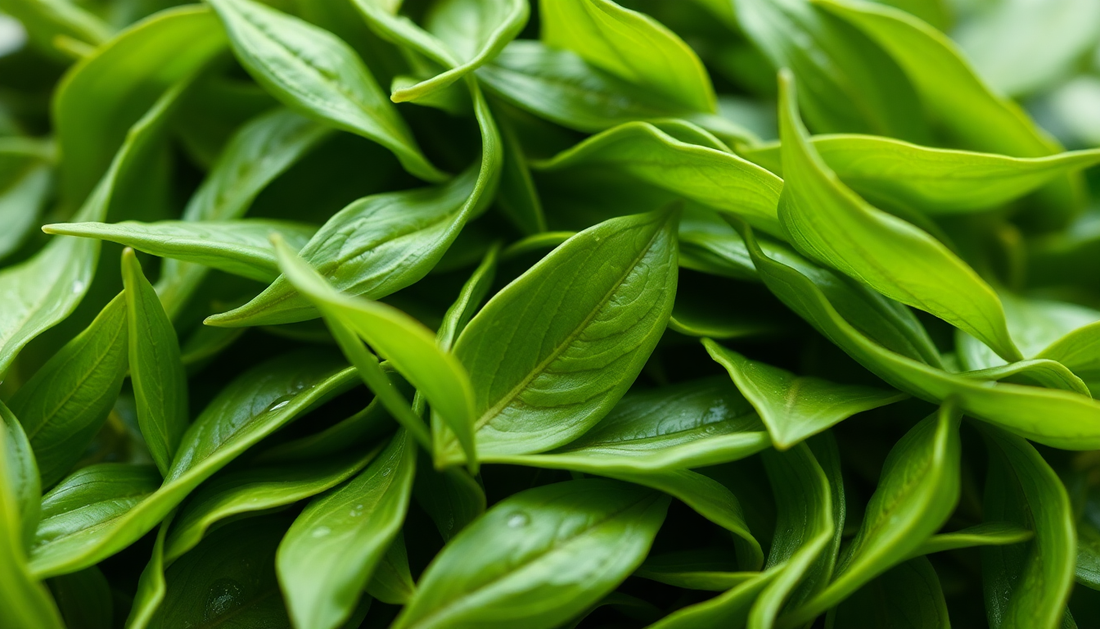
Decoding the Labels: Understanding Tea Grades and Standards
ZenBrew Tea StudioThe world of tea is vast and complex, with a rich history and a diverse array of varieties, each with its own unique characteristics. As tea enthusiasts, we often find ourselves captivated by the nuances of flavor, aroma, and appearance that distinguish one tea from another. However, navigating the intricate landscape of tea grading and standards can be a daunting task, especially for those new to the world of tea.
At ZenBrew Tea Studio, we are dedicated to spreading the most authentic Chinese tea across the globe and incorporating aesthetics into teaware. We believe that tea is not just a beverage, but a medium through which we can experience Zen, achieving peace and pleasure both mentally and physically. As part of our commitment to quality, we have made it our mission to educate our customers on the importance of understanding tea grades and standards.
The Basics of Tea Grading
Tea grading is a crucial aspect of the tea industry, as it helps to establish a consistent and reliable system for evaluating the quality of tea leaves. The purpose of tea grading is to provide a standardized way of assessing the physical characteristics of tea leaves, such as their size, shape, and degree of processing. This information is then used to determine the overall quality and value of the tea, which in turn affects its price and desirability in the market.
The factors that influence tea grades are numerous and varied, ranging from the specific cultivar of the tea plant to the growing conditions and processing methods used. In general, teas that are harvested from the youngest and most tender leaves are considered to be of higher quality, as they tend to have a more delicate and complex flavor profile. Additionally, the degree of oxidation and the level of processing can also play a significant role in determining the final grade of a tea.
Tea Grading Systems Around the World
While the basic principles of tea grading are relatively consistent across different tea-producing regions, the specific grading systems used can vary significantly. In China, for example, the tea grading system is based on a combination of leaf size, processing method, and geographic origin. The highest grades of Chinese tea, such as Longjing and Biluochun, are typically characterized by their small, tightly-rolled leaves and delicate, nuanced flavors.

In India, the tea grading system is largely based on the size and shape of the tea leaves, with the highest grades typically reserved for the smallest and most uniform leaves. The Indian Tea Board has established a comprehensive set of grading standards that are used throughout the country, ensuring a consistent level of quality across the industry.
Japan, on the other hand, has a unique tea grading system that places a strong emphasis on the appearance and color of the tea leaves. The highest grades of Japanese tea, such as Gyokuro and Matcha, are characterized by their vibrant green hue and delicate, umami-rich flavor profiles.
Understanding Tea Leaf Grades
When it comes to tea grading, the size and shape of the tea leaves are of paramount importance. Whole leaf teas, which are typically the highest in quality, are characterized by their intact, unbroken leaves. These teas are often referred to as "tippy" or "golden tip" teas, as they contain a high proportion of the youngest and most tender leaves from the tea plant.
In contrast, broken leaf teas are characterized by their smaller, more fragmented leaves. These teas are often used in blended or flavored tea products, as their smaller size allows for a more even distribution of flavor and aroma. Fannings and dust, which are the smallest and most finely-ground tea particles, are typically used in tea bags and other convenience-oriented tea products.
Specialty Tea Grades
In addition to the standard leaf grades, there are also a number of specialty tea grades that are recognized for their unique characteristics and processing methods. White teas, for example, are typically the most delicate and minimally-processed of all tea varieties, with a light, refreshing flavor and a pale, silvery-white appearance.

Green teas, on the other hand, are characterized by their vibrant green color and their distinctive, grassy or vegetal flavor profiles. Oolong teas, which are partially oxidized, are known for their complex and nuanced flavor profiles, with notes of fruit, flowers, and toasted nuts.
Black teas, which are fully oxidized, are typically the most robust and full-bodied of all tea varieties, with a rich, malty flavor and a deep, reddish-brown color. Finally, Pu-erh teas, which are fermented and aged, are prized for their earthy, complex, and often medicinal-like properties.
Tea Quality Standards
In addition to the various tea grading systems used around the world, there are also a number of international and national quality standards that are used to ensure the consistency and safety of tea products. The International Organization for Standardization (ISO), for example, has established a set of standards for the production, packaging, and labeling of tea, which are widely recognized and adopted by tea producers and distributors around the globe.

At the national level, many tea-producing countries have also established their own quality standards and certification programs. In India, for example, the Tea Board of India has established a comprehensive set of quality standards that are used to evaluate the safety, purity, and organoleptic properties of tea products. Similarly, in China, the China National Tea Quality Standard is used to ensure the consistent quality of tea products across the country.
Decoding Tea Labels
With so many different tea grading systems and quality standards in use around the world, it can be challenging for tea consumers to navigate the complex landscape of tea labels and packaging. However, by understanding the common terminology and certification labels used in the tea industry, it is possible to make more informed and discerning choices when selecting tea products.
Some of the key indicators to look for on tea labels include the specific tea cultivar or varietal, the geographic origin of the tea, and any certification or quality seals that may be present. Additionally, terms like "first flush," "second flush," and "autumn flush" can provide valuable information about the timing and quality of the tea harvest.
The Role of Sensory Evaluation in Tea Grading
Ultimately, the true measure of a tea's quality is not just its physical characteristics, but also its sensory properties. The appearance, aroma, taste, and mouthfeel of a tea are all crucial factors that contribute to its overall quality and desirability.

In the tea industry, sensory evaluation is a highly specialized and nuanced process, involving the use of trained tasters and standardized evaluation protocols. These tasters, known as "tea tasters" or "tea sommeliers," are responsible for assessing the various sensory attributes of a tea, from its color and clarity to its depth of flavor and lingering finish.
The Impact of Processing on Tea Grades
The way in which tea leaves are harvested, processed, and stored can also have a significant impact on their final grade and quality. Factors such as the timing of the harvest, the specific processing techniques used, and the storage conditions can all contribute to the overall character and profile of a tea.

For example, teas that are harvested during the early spring, when the leaves are young and tender, are often considered to be of higher quality than those harvested later in the season. Similarly, the degree of oxidation and the specific processing methods used, such as withering, rolling, and firing, can also play a crucial role in determining the final grade and characteristics of a tea.
ZenBrew Tea Studio's Approach to Tea Quality
At ZenBrew Tea Studio, we are committed to sourcing and providing our customers with the highest-quality teas from around the world. Our approach to tea quality is multi-faceted, encompassing everything from our rigorous sourcing practices to our comprehensive quality control measures and educational initiatives.
When it comes to sourcing, we work closely with a network of trusted tea producers and suppliers, carefully vetting each partner to ensure that they adhere to the highest standards of quality and sustainability. We also place a strong emphasis on traceability, ensuring that we can trace the origin and processing history of each tea we offer.
In terms of quality control, we have implemented a comprehensive system of testing and evaluation, involving both sensory and analytical methods. Our team of trained tea tasters carefully evaluates the appearance, aroma, taste, and mouthfeel of each tea, ensuring that it meets our exacting standards for quality and consistency.
Additionally, we are committed to educating our customers on the importance of understanding tea grades and standards. Through our in-store workshops, online resources, and personalized consultations, we strive to empower our customers to make more informed and discerning choices when it comes to selecting high-quality teas.
The Future of Tea Grading and Standards
As the global tea industry continues to evolve and grow, it is likely that we will see ongoing changes and advancements in the way that tea is graded and evaluated. Some of the emerging trends in the industry include the increasing emphasis on sustainability and ethical sourcing, the rise of specialty and artisanal tea products, and the growing importance of traceability and transparency.
Additionally, there may be changes to the specific grading systems and quality standards used in different tea-producing regions, as producers and industry organizations work to adapt to changing consumer preferences and market demands. As these changes unfold, it will be important for tea enthusiasts and industry professionals alike to stay informed and engaged, in order to ensure the continued quality and integrity of the tea industry.
In the world of tea, understanding the nuances of grading and standards is essential for discerning and appreciating the true quality and character of each cup. By delving into the complexities of tea grading systems, leaf grades, and quality standards, we can gain a deeper appreciation for the art and science of tea production, and make more informed choices when selecting the teas that will bring us the greatest pleasure and fulfillment.
At ZenBrew Tea Studio, we are committed to sharing our passion for tea and our expertise in this field with our customers. We believe that by empowering our customers to understand the language of tea, we can help them to discover the true depth and beauty of this ancient and revered beverage. So, whether you are a seasoned tea connoisseur or a newcomer to the world of tea, we invite you to join us on this journey of exploration and discovery.
